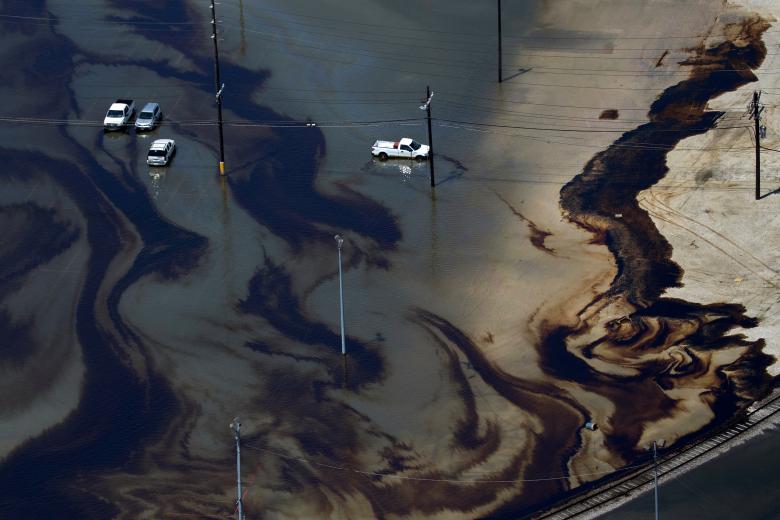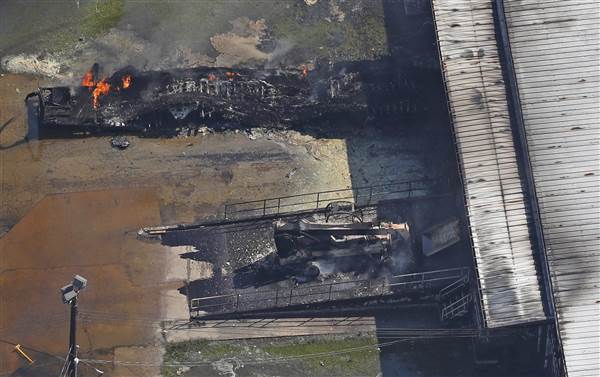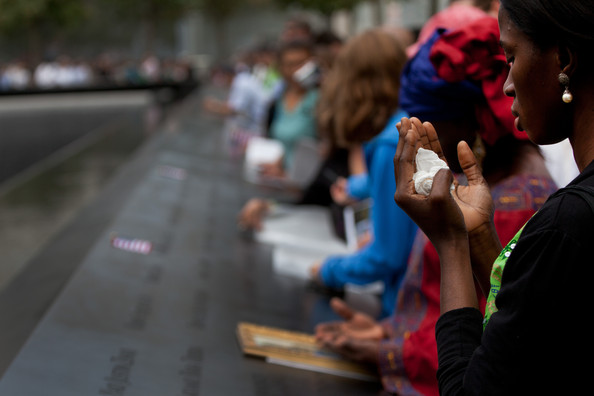Notes
Monster Hurricanes and Eco Disaster Photos: The Indecisive Moment

Many images of Hurricane Harvey’s devastating effects have graced magazine covers and have gone viral online. Some will undoubtedly win prizes in major photography contests:
A SWAT officer carrying a woman cradling an infant, waddling through the floodwater, became a symbol of Houston residents’ perseverance in the face of destruction. (Retweeted by a conservative blogger with a gender-backward comment, the photo consequently ignited hundreds of memes objecting to equating femininity with powerlessness).
Elderly female residents at an assisted-living center, waiting patiently to be evacuated, their wrinkled limbs shining through the murky water, sparked nationwide concern.
A Nebraska National Guard hoisting a black child into a Black Hawk helicopter has stood as a symbol of American spirit. Depicting loss, courage, and human solidarity regardless of gender, race or nationality, these images have been easily communicable illustrations of natural disaster. They create a sense of déjà vu in an endless, circular process of media confirmation.
But there are critical images that are easy to bypass in the “30 most iconic photographs from Hurricane Harvey.” One, taken in the parking lot of Motive Enterprises in Port Arthur, shows abandoned vehicles in floodwater mixed with leaked fuel. Another captures a crippled chemical plant northeast of Houston. The plant houses highly combustible organic peroxides that must be kept chilled. With the power out, two explosions had already taken place and more were imminent.
The two photographs offer no easy recourse to prior narratives, no grand gestures, no heroic action, no sweeping emotions, not much spectacle. More evidentiary than symbolic, they differ significantly from vivid, easily grasped images of people touched by Harvey, especially children, the elderly, women, and heroic responders that we connect with in a glance. Although both are aerial shots, their lack of visual pull cancels any voyeuristic thrill we might expect from the unraveling of natural disaster. (Certainly, it’s not the god-like view crowned by the opening shot of Leni Riefenstahl’s Olympia, 1936.) The absence of a human body – a symbolic marker of damage, harm, war and loss since the beginning of photography – makes our attachment less immediate. Bodies provide the physical expressions, the expansive gestures, and the dynamic composition to engage us emotionally.

But what are the possibilities of these representations in the wake of Harvey?
The Houston area is one of America’s petrochemical hubs. Close to five hundred plants and refineries housing billions of gallons of hazardous chemicals and fuels threaten the air and water. Environmental fallout has been a significant challenge after Katrina, and is already prominent in Florida in the wake of Irma. Both images resist what Henri Cartier-Bresson called a “decisive moment” – a moment of highest intensity, a goal of photographers since the invention of the medium. Rather, they contain the ominous emptiness and the lingering silence of disasters that otherwise hit and pass like lightning strikes. They represent the long-lasting dangers and the unstoppable environmental consequences of global warming accentuated by the Trump administration’s climate denial.
A similar visual approach exists in a different type of photography. Instead of “man versus nature,” the violence of humans against humans is portrayed. The genre of “late photography” or “aftermath photography” has intensified recently in both journalism and humanitarian campaign work. War photographs by Luc Delahaye, Joel Meyerowitz, Paul Seawright, and Sophie Ristelhueber show post-battle, post-disaster, or post-explosion landscapes devoid of human bodies. By removing human suffering from the spectacle and momentum of the traumatic event, the photographs strongly allude, instead, to the long-term reverberations of war.
Rather than inviting voyeurism, such low-intensity photographs have the ability to assert greater political accountability. They can appeal to the imagination in the way that holds deeper personal, social and existential significance. Our ever-fluid media ecology is progressively driven by technology. In large part, that technology brings with it more speed, more instant emotional gratification, and more virality-friendly aesthetics. In contrast, the photos here maintain the opportunity to slow down, to witness and to actually take account of the consequences of Harvey, Irma and the like. A photograph functioning as a void, a remnant, a signifier devoid of the usual perks repositions its relationship to the event. Images of a chemical plant and polluted floodwater constitute such remnants. The fact the photos defy closure is the whole point. The disaster will only keep unfolding.
A huge array of photographs from Texas, the Caribbean, and now Florida, hold sway upon us, capturing our attention. Although images like these two will be considered less powerful by media outlets, contest judges, and global audiences alike (and consequently less shared, “liked,” or cross-linked online), let’s not deny them their right to be looked at. Images like these distinguish themselves from the fleeting photographic moment, from the civil status-quo, in a world being ravaged by climate change.
— Marta Zarzycka
Photos: Adrees Latif/Reuters. Caption: Vehicles sit amid leaked fuel mixed in with floodwaters in the parking lot of Motiva Enterprises LLC in Port Arthur. Photo 2 caption: A fire burns at the flooded plant of French chemical maker Arkema SA in Crosby, Texas, on Aug. 31.


Reactions
Comments Powered by Disqus